people
 The normal hurricane season is from June 1 to November 30, and since we have our first hurricane in the Gulf of Mexico right now, it looks like it’s right on time. Nevertheless, for places like New York, where it is normally a little cooler, the hurricane season starts a little later, and may not really arrive at all. However, on June 4, 1825, a rare early hurricane arrived, moving off the East Coast and tracking south of New York. The hurricane caused several ship wrecks, and killed seven people.
The normal hurricane season is from June 1 to November 30, and since we have our first hurricane in the Gulf of Mexico right now, it looks like it’s right on time. Nevertheless, for places like New York, where it is normally a little cooler, the hurricane season starts a little later, and may not really arrive at all. However, on June 4, 1825, a rare early hurricane arrived, moving off the East Coast and tracking south of New York. The hurricane caused several ship wrecks, and killed seven people.
The National Hurricane Center, states that on average, hurricane winds have impacted the New York City area every 19 years, and major hurricanes, of a Category 3 or higher, only every 74 years. The highest hurricane reading, Category 5 hurricane is not expected to occur there at all, because of the climate conditions there.
Nevertheless, on June 4, 1825, forming ahead of what is now considered hurricane season, a severe tropical storm surprised the Atlantic seaboard from Florida to New York City. At that time, they did not have the prediction capabilities, and this storm was first sighted near Santo Domingo on May 28th. It moved across Cuba on June 1st, with gale force winds,  beginning at Saint Augustine, and approaching US soil on the June 2nd, and impacting Charleston, North Carolina on June 3rd.
beginning at Saint Augustine, and approaching US soil on the June 2nd, and impacting Charleston, North Carolina on June 3rd.
The tide in North Carolina rose six feet at New Bern and fourteen feet at Adams Creek. As the tide rushed in, more than 25 ships were driven ashore at Ocracoke, 27 near Washington, and also some at New Bern. The plantations on the coastal areas near the South River were inundated with water, causing a heavy loss of crops and livestock. New Bern experienced heavy damage near the waterfront.
The storm pummeled Norfolk, with horrific force for 27 hours as the storm passed by to the east beginning on the 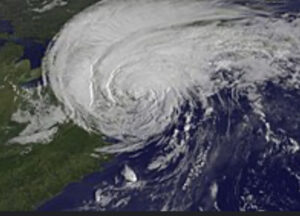 morning of June 3rd. The wind was relentless, uprooting trees as it went. At noon on June 4th, stores on the wharves were flooded in a surge up five feet deep. High winds howled through the Washington DC area. The storm then moved northeast past Nantucket on June 5th.
morning of June 3rd. The wind was relentless, uprooting trees as it went. At noon on June 4th, stores on the wharves were flooded in a surge up five feet deep. High winds howled through the Washington DC area. The storm then moved northeast past Nantucket on June 5th.
The storm reminded many people of the September gale of 1821, except that the September gale would have been much more common. There haven’t been many early June hurricanes in that area since 1825, but there have been a number of hurricanes to hit the area since, including Hurricane Sandy, which did much damage in New York City, including the subway area.

 My youngest sister, Allyn Hadlock has always been a gentle soul. From the time she was just a little girl, she had a heart that always remained soft. The rest of my sisters and I always said that Allyn was “always good.” She didn’t get into mischief, like the rest of us might have. I could never figure out how she did that, probably because I had a mischievous side, and did get into a few scrapes I life…oh nothing serious, but enough to not be the sister who was “always good.”
My youngest sister, Allyn Hadlock has always been a gentle soul. From the time she was just a little girl, she had a heart that always remained soft. The rest of my sisters and I always said that Allyn was “always good.” She didn’t get into mischief, like the rest of us might have. I could never figure out how she did that, probably because I had a mischievous side, and did get into a few scrapes I life…oh nothing serious, but enough to not be the sister who was “always good.”
Over the past couple of years, many people have been seeking the Lord concerning all that is going on around us. My sisters and I are no different, and we, having been raised to know the Lord, find ourselves pressing into Him in these times. My niece, Jessi Sawdon was telling me about my sister’s mothering ways with her children, and I can tell you firsthand…our parents are very proud of her. Jessi says, “One of the things I love most about my mom is her ability to always seek the Lord first. She’s instilled that in us kids and I can see all of us following this same path. And that’s exciting. Like the rest of our family, she had a strong faith, but dang, when times are tough, she is the first one there to help us make the right confessions and remind us of what the Lord has promised us. She makes everything look effortless, even though I know it’s not. She used to tell us to let Gods light shine through us. It will make everyone wonder what we’ve got, and they’ll want it too. She does that every day. I don’t think there is a better gift than her (even though it’s her birthday), and I feel so blessed that she has been such a strong spiritual leader in all our lives and has never wavered.” Allyn’s second daughter, Lindsay Moore agrees with Jessi, as do her son, Ryan Hadlock and youngest daughter, Kellie Hadlock, that Allyn has grown in her walkwith the Lord, and well as in her work and home life. There is no greater tribute than that, if you ask me.
Of course, one of Allyn’s most precious roles, these days, is that of Grammy. Grandchildren are one of the  greatest gifts your kids can ever give you, and Allyn has embraced the title of Grammy with joy and happiness. She has four grandchildren on Earth, and two waiting for her when she gets to Heaven. All are loved and are an amazing blessing to Allyn, and to my brother-in-law, Chris Hadlock. They so enjoy the time they get to spend with those precious kids…which as any grandparent knows, is never long enough. You always want more time, especially when the grandchildren live in a different city. Thankfully, for Allyn and Chris, they two that live in different cities, are still in Wyoming, so visits are more frequent than if they lived in a different state. This way, they visit often, and Allyn loves that. Today is Allyn’s birthday. Happy birthday Allyn!! Have a great day!! We love you!!
greatest gifts your kids can ever give you, and Allyn has embraced the title of Grammy with joy and happiness. She has four grandchildren on Earth, and two waiting for her when she gets to Heaven. All are loved and are an amazing blessing to Allyn, and to my brother-in-law, Chris Hadlock. They so enjoy the time they get to spend with those precious kids…which as any grandparent knows, is never long enough. You always want more time, especially when the grandchildren live in a different city. Thankfully, for Allyn and Chris, they two that live in different cities, are still in Wyoming, so visits are more frequent than if they lived in a different state. This way, they visit often, and Allyn loves that. Today is Allyn’s birthday. Happy birthday Allyn!! Have a great day!! We love you!!
 My husband’s aunt, Esther Hein really likes flowers. She loves gardening and watching her creation bloom. That is a talent that I just don’t have, but Esther does have it…and many others. She is an artist, and has painted great landscapes, which is my favorite, and on a round saw blade, which is very cool. Esther also enjoys making quilts and sewing other things. She made a set of curtains for my mother-in-law, Joann Schulenberg, and while she had Alzheimer’s Disease, and didn’t remember many things, she always remembered that Esther made those curtains for her. I always loved that my mother-in-law kept Esther in her heart. I even remember the time that I was helping her get ready for bed, and she didn’t want to go. Suddenly, out of the blue, she said to me, “Don’t Esther!!” Of course, it had a funny connotation for me too, because my mother-in-law often tried to get out of going to bed so early, but I had to work the next day, so she had to go to bed before the 10:00pm news. The funny thing was that for once I wasn’t the one getting in trouble for making her go to bed. She blamed Esther that day.
My husband’s aunt, Esther Hein really likes flowers. She loves gardening and watching her creation bloom. That is a talent that I just don’t have, but Esther does have it…and many others. She is an artist, and has painted great landscapes, which is my favorite, and on a round saw blade, which is very cool. Esther also enjoys making quilts and sewing other things. She made a set of curtains for my mother-in-law, Joann Schulenberg, and while she had Alzheimer’s Disease, and didn’t remember many things, she always remembered that Esther made those curtains for her. I always loved that my mother-in-law kept Esther in her heart. I even remember the time that I was helping her get ready for bed, and she didn’t want to go. Suddenly, out of the blue, she said to me, “Don’t Esther!!” Of course, it had a funny connotation for me too, because my mother-in-law often tried to get out of going to bed so early, but I had to work the next day, so she had to go to bed before the 10:00pm news. The funny thing was that for once I wasn’t the one getting in trouble for making her go to bed. She blamed Esther that day.
I’m sure that over the years Esther has had to carry some heavy burdens. She raised three children mostly as a single mom, and did a great job of it. They are all responsible members of society and great people. Esther has taught them the way they should go. She has been active in her church and she loves the Lord. She loves the outdoors and camping, but I’m not sure she has been able to do that very much in the last few years. She  loves animals and people. She loves helping people, and in fact, lately she has been helping by delivering food boxes to needy people. There are always needy people these days, from job losses, to home losses, to fire losses, people have needs, and Esther is our there helping to fill those needs. Even though her area of the country, Oregon has been inundated with wildfires this year, just like California, and the smoke was heavy at times, but Esther’s daughter Vina Frye assured me that Esther was safe, and so was she. In fact, it was Vina who told me that Esther was delivering the food boxes. Vina is so proud of her mom and her giving heart…and so am I. Today is Esther’s 80th birthday. Imagine that 80 years old, and she is still helping other people. Happy birthday Esther!! Have a great day!! We love you!!
loves animals and people. She loves helping people, and in fact, lately she has been helping by delivering food boxes to needy people. There are always needy people these days, from job losses, to home losses, to fire losses, people have needs, and Esther is our there helping to fill those needs. Even though her area of the country, Oregon has been inundated with wildfires this year, just like California, and the smoke was heavy at times, but Esther’s daughter Vina Frye assured me that Esther was safe, and so was she. In fact, it was Vina who told me that Esther was delivering the food boxes. Vina is so proud of her mom and her giving heart…and so am I. Today is Esther’s 80th birthday. Imagine that 80 years old, and she is still helping other people. Happy birthday Esther!! Have a great day!! We love you!!
 Most people have attended a circus at one time or another, although they are becoming a little more something from the past. Nevertheless, they used to be huge attractions, and when the circus came to town, almost the whole town turned out to watch the show. That was something that worked against the people of Hartford, Connecticut on July 6, 1944. At that time, Hartford was a city of approximately 13,000 people. The Independence Day festivities had just passed and now the circus was in town to continue the week’s excitement for the townspeople. The Ringling Brothers and Barnum Baily Circus was famous for its incredible show, held under a huge circus tent. At 8,000 people in attendance, about 2/3 of the town was there. It was going to be a great show, and the children of the town were beyond excited.
Most people have attended a circus at one time or another, although they are becoming a little more something from the past. Nevertheless, they used to be huge attractions, and when the circus came to town, almost the whole town turned out to watch the show. That was something that worked against the people of Hartford, Connecticut on July 6, 1944. At that time, Hartford was a city of approximately 13,000 people. The Independence Day festivities had just passed and now the circus was in town to continue the week’s excitement for the townspeople. The Ringling Brothers and Barnum Baily Circus was famous for its incredible show, held under a huge circus tent. At 8,000 people in attendance, about 2/3 of the town was there. It was going to be a great show, and the children of the town were beyond excited.
With the tent filled to capacity, a fire is the worst nightmare, but that is what they had. No one knows exactly what happened, and the 8,000 people inside really had no time in which to react. As panic spread as fact as the fire broke out under the big top of circus, killing 167 people and injuring 682. Two thirds of those who perished 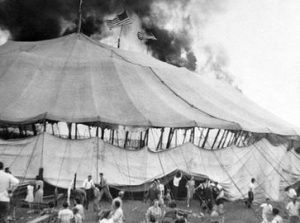 were children. The cause of the fire was unknown, but it spread at incredible speed, racing up the canvas of the circus tent. Suddenly, patches of burning canvas began falling on them from above, and a stampede for the exits began. People became trapped under fallen canvas, but most were able to rip through it and escape, but after the tent’s ropes burned and its poles gave way, the whole burning big top came crashing down, trapping those who remained inside. Within 10 minutes it was over, and some 100 children and 60 of their adult escorts were dead or dying.
were children. The cause of the fire was unknown, but it spread at incredible speed, racing up the canvas of the circus tent. Suddenly, patches of burning canvas began falling on them from above, and a stampede for the exits began. People became trapped under fallen canvas, but most were able to rip through it and escape, but after the tent’s ropes burned and its poles gave way, the whole burning big top came crashing down, trapping those who remained inside. Within 10 minutes it was over, and some 100 children and 60 of their adult escorts were dead or dying.
The fire investigation revealed that the tent had undergone a treatment with flammable paraffin thinned with three parts of gasoline to make it waterproof. These days, no on would consider using gasoline for such a purpose, but unfortunately at that time it was used. Ringling Brothers and Barnum and Bailey Circus eventually agreed to pay $5 million in compensation, and several of the organizers were convicted on manslaughter charges. In 1950, the cause was finally uncovered in the case when Robert D Segee of Circleville, Ohio, confessed to starting the Hartford circus fire. Segee claimed that he had been an arsonist since the age of six and that “an apparition of an Indian on a 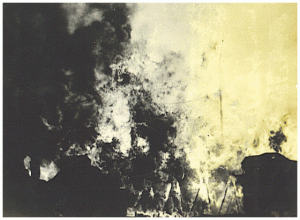 flaming horse often visited him and urged him to set fires.” In November 1950, Segee was convicted in Ohio of unrelated arson charges and sentenced to 44 years of prison time. The Hartford investigators raised doubts over his confession. Segee had a history of mental illness, and it could not be proven he was anywhere within the state of Connecticut when the fire occurred. Connecticut officials were also not allowed to question Segee, even though his alleged crime had occurred in their state. Segee, who died in 1997, denied setting the fire as late as 1994 during an interview. Because of this, many investigators, historians, and victims believe the true arsonist…if it was indeed arson…was never found.
flaming horse often visited him and urged him to set fires.” In November 1950, Segee was convicted in Ohio of unrelated arson charges and sentenced to 44 years of prison time. The Hartford investigators raised doubts over his confession. Segee had a history of mental illness, and it could not be proven he was anywhere within the state of Connecticut when the fire occurred. Connecticut officials were also not allowed to question Segee, even though his alleged crime had occurred in their state. Segee, who died in 1997, denied setting the fire as late as 1994 during an interview. Because of this, many investigators, historians, and victims believe the true arsonist…if it was indeed arson…was never found.
 The current generation of kids probably have no idea what a phone booth is, besides maybe a place for Superman to change into his costume. From the time phones first became something that was provided to the public for a fee, phone booths became a common sight on city streets. Then in the 1950s, a new fad began. Much like the fad of stuffing as many people as possible into a car, people decided to stuff as many people as possible into a phone booth. My guess is that like most of these strange fads, this one too,
The current generation of kids probably have no idea what a phone booth is, besides maybe a place for Superman to change into his costume. From the time phones first became something that was provided to the public for a fee, phone booths became a common sight on city streets. Then in the 1950s, a new fad began. Much like the fad of stuffing as many people as possible into a car, people decided to stuff as many people as possible into a phone booth. My guess is that like most of these strange fads, this one too,  was practiced mostly by young people.
was practiced mostly by young people.
Phone booth stuffing first gained popularity outside the United States, but once it arrived stateside, in spring 1959, kids couldn’t help but join in. Basically, people would cram their bodies into the narrow spaces like sardines in a can. Some adopted other methods, such as stacking themselves horizontally. Just imagine being the guy on the bottom of the stack. All I can say is, “Hurry up, because I can’t breathe!!”
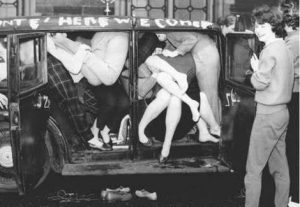 As with so many other crazy fad, phone booth stuffing became something to set a world record for. People began trying to outdo the prior record. The word record for phone-booth stuffing came in March 1959, when 25 people in South Africa piled into a booth. I can’t imagine how they could possibly fit 25 people in a phone booth, but while they were all in there, the phone rang. Of course, nobody answered the phone, because nobody could move enough to reach it. Sadly, the trend died by the end of 1959. Of course, that doesn’t mean that some of the other stuffing trends didn’t continue. I think people are still stuffing as many people as they can into a car. I just hope they don’t try to drive that way.
As with so many other crazy fad, phone booth stuffing became something to set a world record for. People began trying to outdo the prior record. The word record for phone-booth stuffing came in March 1959, when 25 people in South Africa piled into a booth. I can’t imagine how they could possibly fit 25 people in a phone booth, but while they were all in there, the phone rang. Of course, nobody answered the phone, because nobody could move enough to reach it. Sadly, the trend died by the end of 1959. Of course, that doesn’t mean that some of the other stuffing trends didn’t continue. I think people are still stuffing as many people as they can into a car. I just hope they don’t try to drive that way.
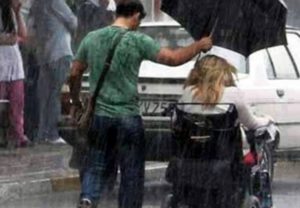 I think most of us try to be nice people. We try to do nice things for our friends and loved ones, but what about random acts of kindness for people we don’t know. Most of us really put those things on the back burner, so to speak. It is probably a sad thing that there has to be a day set aside for random acts of kindness, but maybe we all need a reminder once in a while. There are always people who are less fortunate than we are…no matter how bad off we think we are. Most people think that random acts of kindness need to include money, but that isn’t so. The needs of those around us are not always monetary. Sometimes, people simply need a smile at the right moment, because they are feeling down. Other times, money is the need, of course. I think the key is to be aware, and to listen to your own spirit when it comes to hearing about the needs of those around you. If you feel led to do something for someone, act
I think most of us try to be nice people. We try to do nice things for our friends and loved ones, but what about random acts of kindness for people we don’t know. Most of us really put those things on the back burner, so to speak. It is probably a sad thing that there has to be a day set aside for random acts of kindness, but maybe we all need a reminder once in a while. There are always people who are less fortunate than we are…no matter how bad off we think we are. Most people think that random acts of kindness need to include money, but that isn’t so. The needs of those around us are not always monetary. Sometimes, people simply need a smile at the right moment, because they are feeling down. Other times, money is the need, of course. I think the key is to be aware, and to listen to your own spirit when it comes to hearing about the needs of those around you. If you feel led to do something for someone, act  upon that leading, using the appropriate amount of caution of course, because not everyone is nice.
upon that leading, using the appropriate amount of caution of course, because not everyone is nice.
Sometimes random acts of kindness should be anonymous too. I think that applies to most of the time. There is no need for recognition with random acts of kindness. In fact, that is the point of a random act of kindness, to remain anonymous…and even if they see you, they don’t have to know your name. All they have to know is that someone cared enough to do something nice for them. The thing that I always find to be true is that invariably, the person you choose to do something nice for, really needed to know that someone cared right then. We always think that we could not possibly know who needed our help, but I think that there are always telltale signs…even if it is just a feeling we have inside.

I suppose that sometimes, a random act of kindness can bless someone who, for all intents and purposes, doesn’t need any such act of kindness. Maybe there is nothing lacking in their life. Still, can a kindness shown ever be wasted? I don’t think so, because who could need a random act of kindness more than someone who thinks that they only have themselves to count on. We all know people who “don’t need any help” from anyone. To me, that is the saddest of all, because, as the saying goes, “no man is an island.” So today, if you have the chance to, show someone a random act of kindness, and maybe it could become a habit for every day.
 When disaster strikes, and homes are in ruin, people try to come together to help return a sense of normalcy to the people affected by the disaster. Disasters happen quickly, and the devastation is often heavy. It is a difficult thing to help people heal. While one disaster or event is often the same as another in terms of damage, something we somehow don’t connect to that same kind of devastation, is war. I’m not sure why, but when I think of war,I picture a battle held in the middle of a vast desert, with no civilization in sight. of course, when I really think about it, I now that is not reality, but rather my mind trying to fit war into a box of civility. In reality, there is nothing civil about war. Gun shots, bombs, and land mines aren’t picky about who they hit. Soldier or civilian…all are fair game in a war. And towns…well, there is often little to nothing left after a bomb hits.
When disaster strikes, and homes are in ruin, people try to come together to help return a sense of normalcy to the people affected by the disaster. Disasters happen quickly, and the devastation is often heavy. It is a difficult thing to help people heal. While one disaster or event is often the same as another in terms of damage, something we somehow don’t connect to that same kind of devastation, is war. I’m not sure why, but when I think of war,I picture a battle held in the middle of a vast desert, with no civilization in sight. of course, when I really think about it, I now that is not reality, but rather my mind trying to fit war into a box of civility. In reality, there is nothing civil about war. Gun shots, bombs, and land mines aren’t picky about who they hit. Soldier or civilian…all are fair game in a war. And towns…well, there is often little to nothing left after a bomb hits.
During World War II, London was often the targets of the German Luftwaffe, and the bombs they dropped, devastated many parts of London. From September 7, 1940, London was systematically bombed by the Luftwaffe for 56 out of the following 57 days and nights, in what was called “The Blitz.” Most notable was a large daylight attack against London on September 15th. Of course, these weren’t the only bombings, and the people of London didn’t know when or if it was safe to be out of the bomb shelters. Life in London had taken on eerie gloom,as people continued to seek refuge in the bomb shelters, because that was the only safe place to be. The biggest problem was that the bomb shelters were also gloomy, boring, and generally depressing. The children probably suffered the most, because kids don’t really understand all this hatred and killing. Their world had been turned upside down…and they didn’t know why.
By the end of 1940, 24,000 civilians had been killed in the Blitz and hundreds of thousands made homeless. In November, German bombers had obliterated Coventry city center and there had been particularly fierce raids on Manchester and Liverpool in the days leading up to Christmas. The public were now mourning the loss of their loved ones on the home front and in combat, as well as praying for the 41,000 British soldiers captured on the continent, but it was the children, in my mind, who suffered the most. Their childlike innocence was completely destroyed, along with their homes. Their parents, and other adults made the decision to change their little world, even if it was only for a short time. They didn’t have much, but they put together whatever they could to lift the spirits of these scared children. Christmas parties were held for the children and the shelter walls were decorated with paper chains and decorations, while amateur singing nights, discussion groups, and sewing circles were held regularly.
In order to avoid the bombs, many families spent some of the holidays in air-raid shelters and other places of refuge. They decked out their temporary homes with makeshift decorations…and very short Christmas trees because of the height of the shelters. Even if gas or electricity was available, Christmas dinner would have still been an amazing feat, because turkey was so expensive. Most people made do with other cuts of meat, which were still expensive. A family of four’s weekly meat ration probably wouldn’t even cover the cost of a small chicken. One alternative was home-raised chickens or rabbits, much to the shock of young children who often regarded them as pets. Home-grown vegetables and chutneys would have also made the table. Rations were 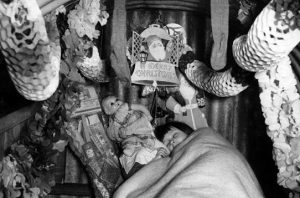 scrimped and saved including ham, bacon, butter, suet, and margarine. The tea and sugar rations were increased in the week before Christmas. Very little fruit was imported and nuts were very costly. Consequently, cooks had to improvise Christmas cakes and puddings devoid of dried fruit and marzipan, using instead sponge or other unlikely ingredients. Alcohol was available but, horribly expensive. And there would be no after-dinner French cheeses or brandy due to the German occupation. It was a poor Christmas party in comparison to those in the past, but it served to remind all the people that Christmas is more about the blessings in life, than it is about the things we are given.
scrimped and saved including ham, bacon, butter, suet, and margarine. The tea and sugar rations were increased in the week before Christmas. Very little fruit was imported and nuts were very costly. Consequently, cooks had to improvise Christmas cakes and puddings devoid of dried fruit and marzipan, using instead sponge or other unlikely ingredients. Alcohol was available but, horribly expensive. And there would be no after-dinner French cheeses or brandy due to the German occupation. It was a poor Christmas party in comparison to those in the past, but it served to remind all the people that Christmas is more about the blessings in life, than it is about the things we are given.

 Human beings have always had an interest in fire. Of course, fires have been around…forever, but people didn’t always have the ability to control them, or even get them started. Then 1826, John Walker was stirring a pot of chemicals when he noticed a dried lump had formed on the end of the mixing stick. Without thinking, John tried to scrape the dried glob. Suddenly, the stirring stick ignited. Immediately he knew he had found something amazing. So, he made lots more of his “friction lights” to sell at the local bookstore.
Human beings have always had an interest in fire. Of course, fires have been around…forever, but people didn’t always have the ability to control them, or even get them started. Then 1826, John Walker was stirring a pot of chemicals when he noticed a dried lump had formed on the end of the mixing stick. Without thinking, John tried to scrape the dried glob. Suddenly, the stirring stick ignited. Immediately he knew he had found something amazing. So, he made lots more of his “friction lights” to sell at the local bookstore.
The “friction lights” were three inches long and came neatly in a box with a piece of sandpaper. Walker wasn’t interested in patenting the idea, so Samuel Jones copied the matches and sold “Lucifers.” They were a little more practical than Walker’s friction lights. Lucifers were shorter and came in a smaller cardboard box for easy carrying. Too bad John Walker didn’t patent his product. Imagine how rich he would have become. Matches are still used in lots of places.
A Chinese book titled “Records of the Unworldly and the Strange,” by Tao Gu, makes reference to the earliest description of a match-like product. They were called “fire-inch sticks” and used sulfur to start the flame. Still, they were not strikeable, which makes me wonder how they worked exactly. French chemist Jean Chancel invented the first self-igniting match in 1805. Mr. Chancel’s method involved a wooden splint tipped with sugar and potassium chlorate that was carefully dipped into a small bottle of concentrated sulfuric acid. Chancel’s 
 method was highly unpleasant and dangerous. The mix of chemicals produced a yellow smelly gas called chlorine dioxide, which explodes when it comes into contact with pretty much anything. Today, matches are made with non-poisonous red phosphorus, discovered by Johan Edvard Lundstrom. The Diamond Match Company was the first to sell “safety matches” in the United States, forfeiting their patent rights to allow all match companies to produce safe matches. Still, we can trace it all back to the accidental invention of John walker, pharmacist.
method was highly unpleasant and dangerous. The mix of chemicals produced a yellow smelly gas called chlorine dioxide, which explodes when it comes into contact with pretty much anything. Today, matches are made with non-poisonous red phosphorus, discovered by Johan Edvard Lundstrom. The Diamond Match Company was the first to sell “safety matches” in the United States, forfeiting their patent rights to allow all match companies to produce safe matches. Still, we can trace it all back to the accidental invention of John walker, pharmacist.
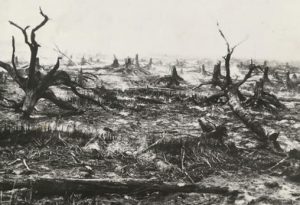 Where there is a forest, there is a possibility of a massive forest fire. The area around Moose Lake in Minnesota, had just such a fire that started on October 12, 1918. The fire, known as the Cloquet-Moose Lake fire, killed hundreds of people and leaving thousands of people homeless. The fire burned a hug area at least 1,500 square miles. The fire, which began at the rail lines near Sturgeon Lake, did the most damage in the Cloquet and Moose Lake areas. This is a region of Minnesota, north of Duluth in the eastern part of the state.
Where there is a forest, there is a possibility of a massive forest fire. The area around Moose Lake in Minnesota, had just such a fire that started on October 12, 1918. The fire, known as the Cloquet-Moose Lake fire, killed hundreds of people and leaving thousands of people homeless. The fire burned a hug area at least 1,500 square miles. The fire, which began at the rail lines near Sturgeon Lake, did the most damage in the Cloquet and Moose Lake areas. This is a region of Minnesota, north of Duluth in the eastern part of the state.
The area was really a recipe for a major disaster of this sort. The timber industry used a crude 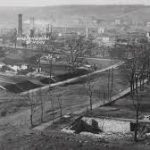 slash method in the thick forests, thus leaving behind dry scraps that were perfect kindling for wildfires. They were not careful where they left the slash either, tending to leave the scraps lying around the rail lines that carried wood from the lumber mills. Train engines of that time often gave off sparks, and when the sparks hit the slash pies, fires were nearly inevitable. The months leading up to October 1918 were very hot and dry, which made matters even worse. The fire began that October 12th, and it quickly spread due to the high winds that day. More than 200 people died in the Moose Lake area, when the fire raced into the community. Many of the local residents tried to escape the raging flames by driving down Highway 73, south of the Kettle River. The
slash method in the thick forests, thus leaving behind dry scraps that were perfect kindling for wildfires. They were not careful where they left the slash either, tending to leave the scraps lying around the rail lines that carried wood from the lumber mills. Train engines of that time often gave off sparks, and when the sparks hit the slash pies, fires were nearly inevitable. The months leading up to October 1918 were very hot and dry, which made matters even worse. The fire began that October 12th, and it quickly spread due to the high winds that day. More than 200 people died in the Moose Lake area, when the fire raced into the community. Many of the local residents tried to escape the raging flames by driving down Highway 73, south of the Kettle River. The  road had a very sharp curve that proved to be too difficult to maneuver for drivers who were speeding away from the flames surrounding them. At least 15 vehicles went off the road within minutes, which resulted in 25 deaths.
road had a very sharp curve that proved to be too difficult to maneuver for drivers who were speeding away from the flames surrounding them. At least 15 vehicles went off the road within minutes, which resulted in 25 deaths.
In all, he fire destroyed 38 towns and villages. The total dead was 453 and another 85 people were seriously burned. The area lost 4,000 houses, 6,000 barns, and 40 schools to the flames.The fire came up so quickly that there was no time to try to get the livestock out, and hundreds of thousands of farm animals also perished in the fire. It was a huge loss for area farmers. In all, the region suffered close to $100 million in damages.
 For many years, levee systems were built along rivers to hold back flood waters. They work very well…until they don’t. When a levee ruptures, the resulting flood is usually devastating. From June through August of 1993, the midwestern United States received an unusually large amount of rain…far more than normal. The rain led to severe flooding, particularly along the Illinois and Missouri shores. Then, on July 22, 1993, the levee holding back the flooding Mississippi River at Kaskaskia, Illinois, ruptured. The town’s people were forced to flee on barges. In all, more than 1,000 levees burst in late July, but, the incident at Kaskaskia was the most dramatic event of the flood. The town, which was virtually an island, was protected by a levee that the town attempted to shore up even after the bridge connecting the town to the riverside was wiped out by the rising river. At
For many years, levee systems were built along rivers to hold back flood waters. They work very well…until they don’t. When a levee ruptures, the resulting flood is usually devastating. From June through August of 1993, the midwestern United States received an unusually large amount of rain…far more than normal. The rain led to severe flooding, particularly along the Illinois and Missouri shores. Then, on July 22, 1993, the levee holding back the flooding Mississippi River at Kaskaskia, Illinois, ruptured. The town’s people were forced to flee on barges. In all, more than 1,000 levees burst in late July, but, the incident at Kaskaskia was the most dramatic event of the flood. The town, which was virtually an island, was protected by a levee that the town attempted to shore up even after the bridge connecting the town to the riverside was wiped out by the rising river. At  9:48am, the levee broke, leaving the people of Kaskaskia with no escape route other than two Army Corp of Engineers barges. By 2pm, the entire town was underwater.
9:48am, the levee broke, leaving the people of Kaskaskia with no escape route other than two Army Corp of Engineers barges. By 2pm, the entire town was underwater.
The rupture of the levee at Quincy, Illinois, left no way to cross the Mississippi River for 250 miles north of Saint Louis. In Grafton, Illinois, flood waters reached two stories high. Other towns fared somewhat better, but the flooding was bad everywhere. In Saint Genevieve, Missouri, the entire town turned out in a desperate attempt to raise the levee. Prisoners were even brought in to assist the effort. The river crested at a record 49 feet, just two feet below the improved levee. The flood inundated 1 million acres of prime farm land and wreaked havoc on the area’s economy. Miles of wheat fields were too saturated to harvest that season. In addition, the herbicides from the farms washed down the river and severely damaged fish farms in Louisiana. Many other people lost their jobs when barge traffic on the river was suspended for two months. The Mississippi 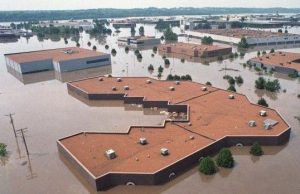 flood of 1993 caused $18 billion in damages and killed 52 people.
flood of 1993 caused $18 billion in damages and killed 52 people.
Levees can save lives, but when levees fail…people die, and property is destroyed. Sometimes, there is some warning, but other times, the flood that was expected, brings with it an unexpected consequence. And I can’t think of a worse unexpected consequence, than having far more water inundate an area that the flood could possibly have brought in. That was the case in 1993, and especially the case in Kaskaskia, Illinois. No one was prepared for the massive amount of water, and for 52 people, there was no way of escape.

